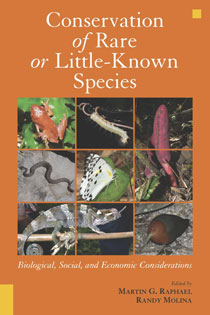"Seldom are rare or poorly known species—often invertebrates and nonvascular plants—the targets of conservation planning. The consequence of such oversight for biodiversity conservation is the topic of this well-edited book, targeted to scientists who work closely with land managers to conserve terrestrial biodiversity and to managers responsible for implementing conservation strategies. The scope is broad, addressing legal, social, economic, and political issues as well as the obvious scientific challenges. This book clearly fills a gap in conservation biology literature by emphasizing the potential importance of species that often constitute the majority in many ecological communities."
Barry Noon, Department of Fish, Wildlife, and Conservation Biology, Colorado State University
"It is one thing to assemble the biological knowledge and political will to conserve rare species. It is another to do so for species we barely know and appreciate, like microspiders and snow fleas. This volume shows us with exceptional clarity that both rare and little-known species can be conserved. No, they must be conserved. We all will benefit from this book as it motivates, teaches, and enlightens land managers to conserve biological diversity in all its finery."
John M. Marzluff, Professor of wildlife science, University of Washington
"An insightful look at what constitutes rarity and a much-needed synthesis of how resource professionals can evaluate and ultimately conserve rare species. This book debunks the false dichotomy between management for biodiversity versus management for rare species."
Michael L. Morrison, Caesar Kleberg Chair in Wildlife Ecology and Conservation, Texas A&M University

